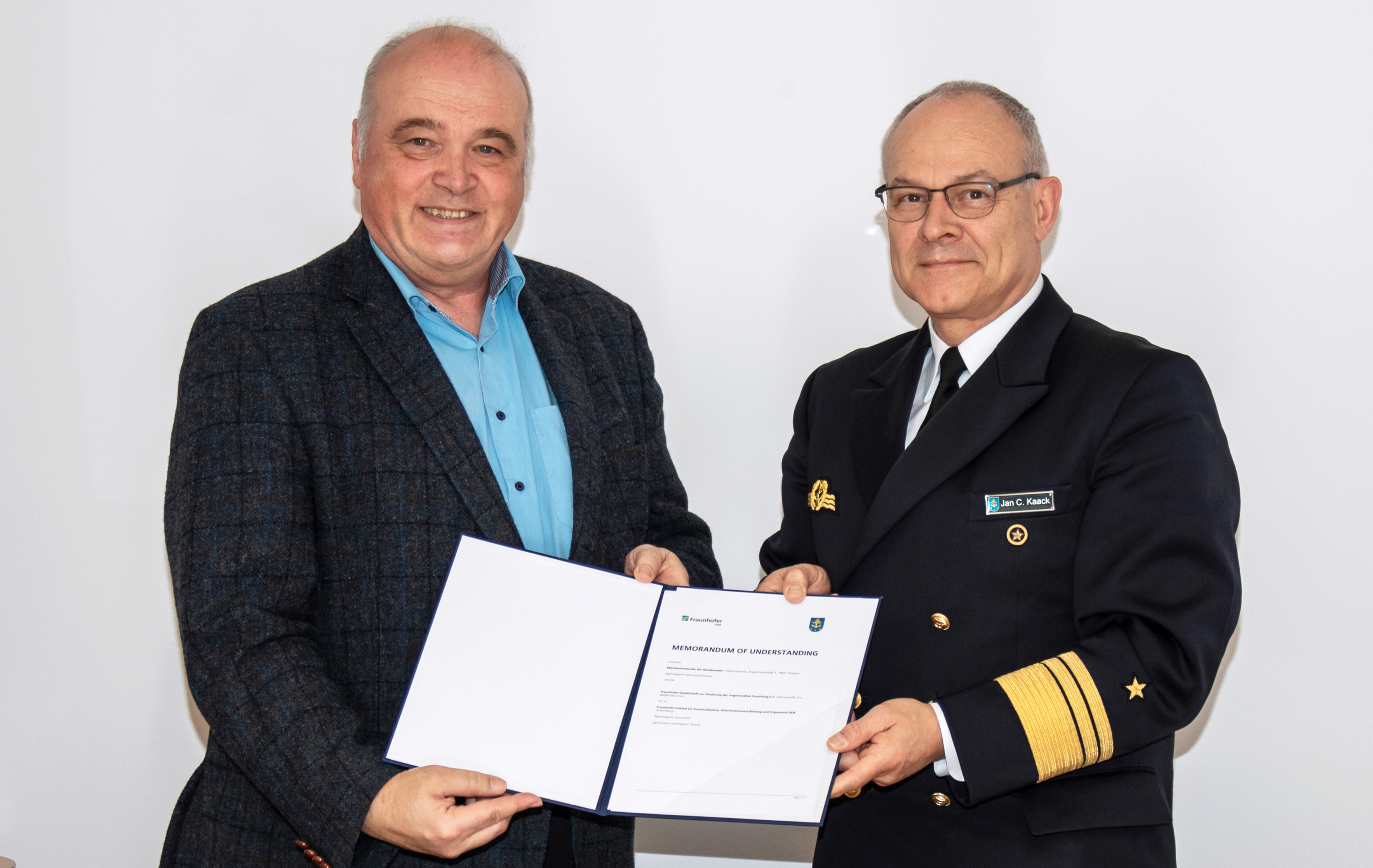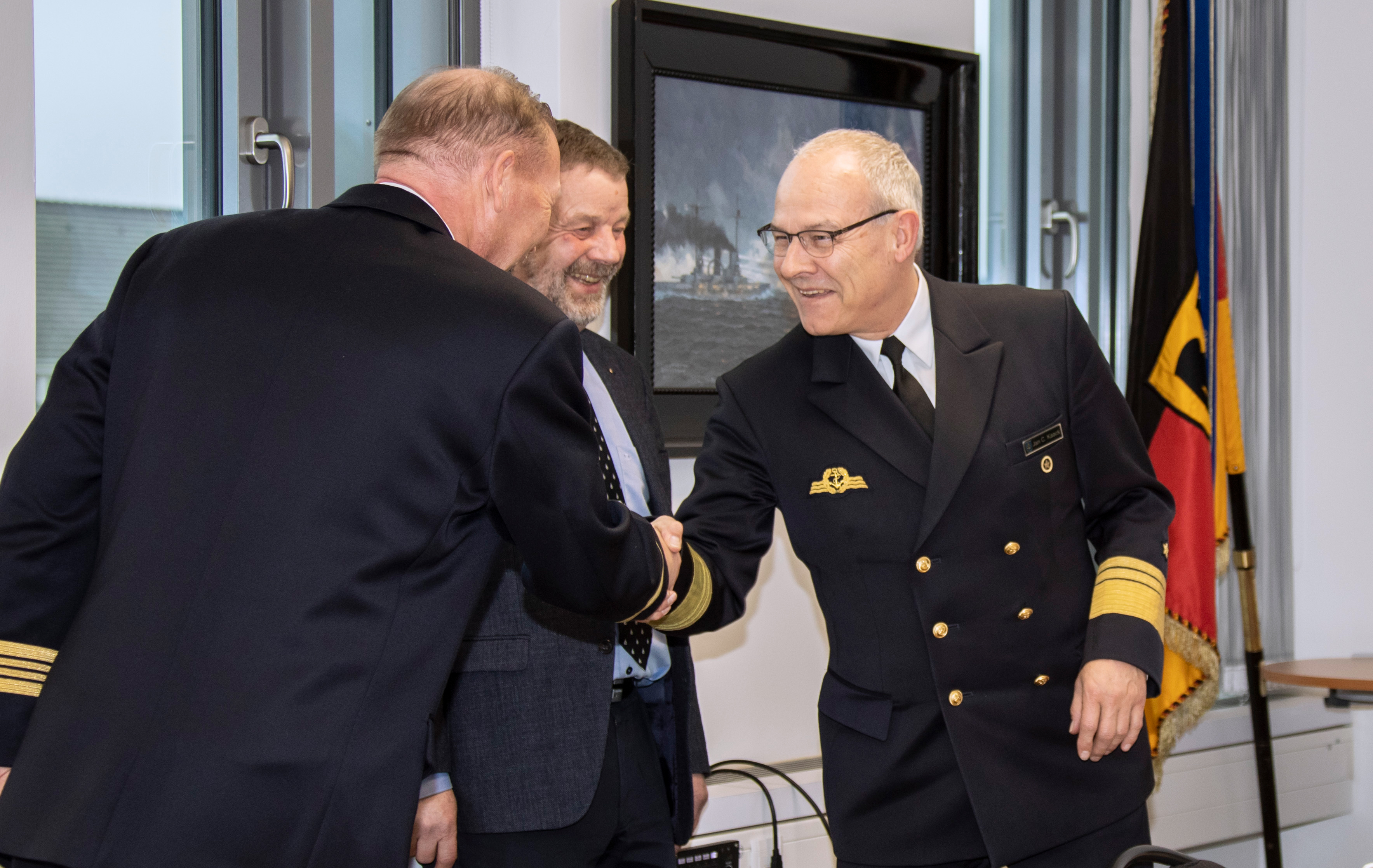Enhanced cooperation with focus on AI-supported situational awareness and unmanned systems
The German Navy is making advances in the digitalization of its core processes. For many years now, the Fraunhofer Institute for Communication, Information Processing and Ergonomics FKIE has been providing scientific and technical support in this area. The defense technology institute, based in Wachtberg, Germany, has focused its research on digitalization in defense and security. Now, in a Memorandum of Understanding (MoU) the Navy Command and Fraunhofer FKIE have agreed to further expand their cooperation. "We are doing this, because we are facing real challenges," says Vice Admiral Jan Christian Kaack, Chief of the Navy.


In these changing times, the German Armed Forces have made national and allied defense their core mission once more, with a marked focus on deterrence in response to NATO’s clear message. Even in peacetime, the navy must be ready for action at a moment’s notice and maintain a presence in the North Atlantic, North Sea and Baltic Sea theaters of operation. At the same time, the state of play in maritime combat zones is undergoing massive changes: Innovative technologies such as new underwater sensors and comprehensive land-, air- and space-based reconnaissance are creating an increasingly transparent battlefield. In order to operate successfully, troops rely above all on a detailed picture of the situation, which can only be obtained with the help of complex, AI-supported IT systems. These systems consolidate the enormous volumes of data, evaluate them and provide support for making decisions.
Using unmanned systems to protect service personnel
Technological progress is also changing the battlefield in other ways, however: The pace of action is accelerating and the margin of time available for defensive measures is shrinking. The threat to German troops is increasing. It is therefore expected that unmanned systems will be deployed to a greater extent and supplement the armed forces network. In this context, integration with other branches of the armed forces and allied partners is also gaining in importance.
Fraunhofer FKIE as an expert scientific exchange partner
Given their considerable relevance, the areas of AI-supported situational awareness and unmanned systems will thus be at the center of the closer collaboration between the Navy Command and Fraunhofer FKIE going forward. With its vast technology portfolio, the institute is ideally equipped for this task. In addition to these key areas, FKIE is able to provide substantial support for many other aspects relating to the digitalization of the navy. Examples include technologies for reconnaissance, situational awareness and command support, the user-centric design of maritime platforms, technology for underwater missions and the issue of cyber security in general.
Putting research into action
“The Navy Command welcomes having Fraunhofer FKIE at its side as a strong technology partner,” said Vice Admiral Kaack, Chief of the Navy, at the time of signing the MoU. This was reiterated by Professor Peter Martini, FKIE institute director: “Focusing on defense technology is firmly anchored in the DNA of Fraunhofer FKIE. I, too, am therefore delighted that the institute is strengthening its long-standing collaboration with the Navy Command. It is particularly exciting and a real motivating factor for us that we will have the opportunity to test out our research findings with users and receive direct feedback. That really is the best way to put research into action.”
